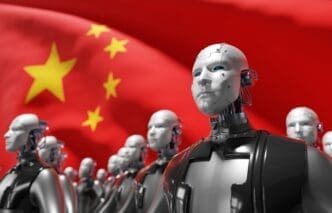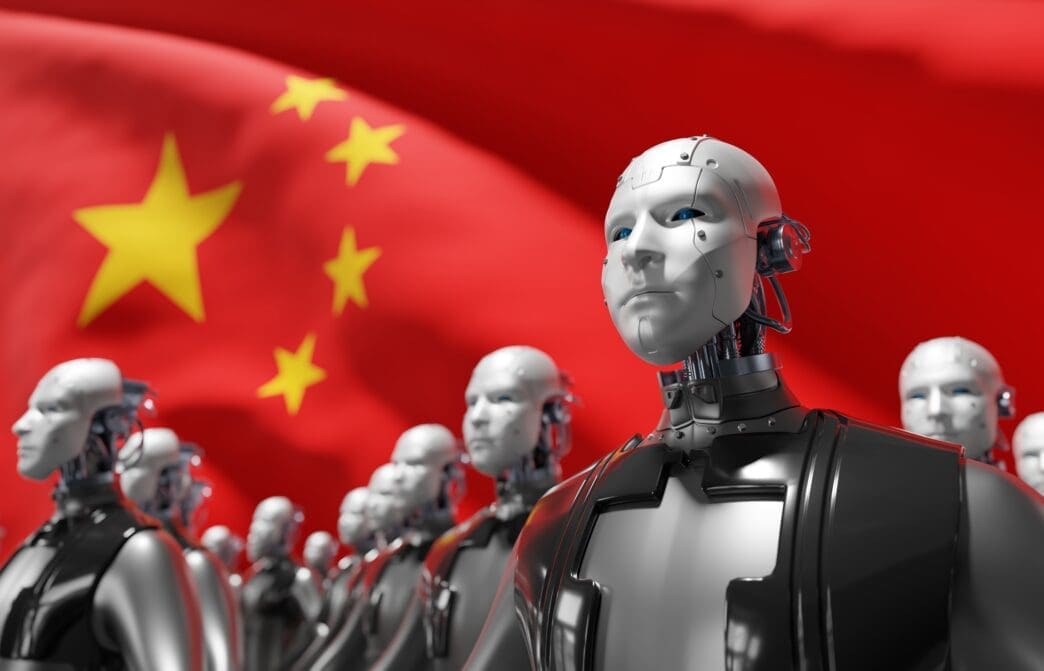Executive Summary
The Story So Far
Why This Matters
Who Thinks What?
While concerns grow in the United States about an investment bubble forming in advanced artificial intelligence (AI) chips and data centers, China faces the opposite challenge: a potential underinvestment in the frontier of AI development. Despite ambitious goals from some of its technology giants, the People’s Republic is spending significantly less on AI infrastructure and research compared to its American counterparts, driven by internal market dynamics and external pressures.
China’s AI Ambition and Investment
Alibaba, a prominent Chinese tech company, saw its shares surge last month after CEO Eddie Wu declared the company’s intent to become a “full-stack AI service provider” and one of the world’s few supercomputing platforms, aiming for artificial general intelligence (AGI). However, analysts at Morningstar project Alibaba’s capital expenditure to average around 15% of revenue over the next three years, totaling approximately $71 billion.
This figure is notably less than the average $94 billion, or 21% of sales, that Alphabet, Amazon.com, and Microsoft are each forecast to spend this year alone, according to Visible Alpha data. Other major Chinese firms, including ByteDance and Meituan, are also increasing their AI investments, with Tencent flagging capital expenditure in the “low teens” percentage of revenue this year, up from less than 5% two years prior.
Overall, Bank of America analysts estimated in August that AI capital expenditure in China could reach 700 billion yuan ($98 billion) by 2025. This projection, however, represents only one-fifth of the annual spending that consultancy Bain & Company expects to see in the United States each year over the remainder of the decade.
Factors Limiting Chinese AI Investment
Several factors contribute to China’s comparatively lower AI spending. Enterprises in the People’s Republic have been slower to adopt IT solutions, particularly in cloud computing, where most AI models reside. Jefferies research indicates that China accounts for only a tenth of global cloud sales, with Microsoft’s Azure and Amazon’s AWS units each forecast to generate over $100 billion in sales for the current fiscal year, dwarfing Alibaba’s Cloud Intelligence Group’s estimated $21 billion.
A fierce price war within China’s tech sector further caps potential returns on AI investments. In the cloud computing market, Alibaba competes with numerous rivals, including Huawei and state-owned mobile carriers. This aggressive pricing extends to AI models, with Alibaba slashing the price of its Qwen-Long model for developers by 97% in May, and ByteDance cutting its Doubao model prices by 63% a month later. DeepSeek also recently halved prices on its software tools, contrasting sharply with OpenAI’s GPT-5, which charges an average of $5.63 per one million tokens.
Additionally, U.S. export controls on advanced chips compel Chinese companies to rely on less powerful domestic alternatives, necessitating larger purchases of semiconductors or significant investment in workarounds to achieve comparable outcomes to Western peers. Some firms, such as Alibaba and Huawei, are dedicating resources to developing their own processors to mitigate these hardware constraints.
Profitability and Policy Influence
These challenges—hardware limitations, intense price competition, and slower AI adoption—are impacting profitability. Alibaba’s cloud operating profit margin, based on earnings before interest, tax, and amortization, is projected to reach 9.2% in 2027, less than half of Alphabet’s cloud unit margin and under a quarter of Amazon AWS’s, according to Visible Alpha. This lower profitability contributes to less enthusiastic shareholder sentiment, with Alibaba’s stock trading at less than 20 times forward earnings, below the average 27 times for the “Big Four” U.S. hyperscalers.
Chinese government policy also plays a role in tempering investment. While Beijing aims for technological self-sufficiency and AI leadership, it simultaneously warns against “disorderly competition” and a “follow-the-crowd” approach to prevent overcapacity, a problem seen in other industries like solar panels and electric vehicles. Tech giants, still recovering from years of regulatory crackdowns, are likely to adhere to these directives, leading to a more coordinated and cautious investment strategy.
Strategic Implications
This measured approach means Chinese tech firms often prioritize the rapid commercialization of pragmatic AI applications across various sectors, including factories, schools, hospitals, and cities, rather than investing heavily in achieving higher frontier AI capabilities. While this strategy may shield China from an AI bubble-induced economic crash, it carries the risk of the nation falling behind in shaping the next generation of this transformative technology.








